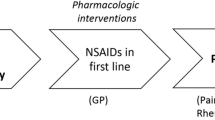Abstract
Medullary sponge kidney (MSK) is a cause of nephrocalcinosis, associated with hematuria, renal colic, pyelonephritis. There are rare and atypical MSK cases characterized by chronic severe pain (CP), whose features are unknown, in particular the relationship with the stone disease activity. This study analyzes a cohort of MSK–CP patients belonging to three North-America self-support Facebook groups. Patients had to self-administer an on-line questionnaire (on intensity, progression and MSK-associated conditions, stone-related disease, pain features, drug use), the Brief Pain Inventory, the Fatigue Severity Score, and Wisconsin Quality of Life (WQL) in stone formers questionnaires. Ninety-two patients with a diagnosis of MSK joined our survey. Stone rate was very high (3.1 stones per patient-year, < 15% of patients had ≤ 1 stone per year). Most patients had repeated hospitalizations for stones symptoms (p < 0.001) or pain (p < 0.005). 71% of participants referred a daily pain that interfered strongly with everyday life and quality of life (WQL mean value 29.4). 69% used pain medications daily (70% opioids). In most cases, pain was associated with stone passage, while 15% referred a sine materia pain. We showed how MSK–CP symptoms affect very negatively on the quality of life of these patients. They also have a definite risk of progressing to end-stage kidney disease. Generally, CP seems to be associated with an exceptionally high lithogenic activity, suggesting that a better and earlier metabolic treatment for stone prevention should be the first approach in these patients before mini-invasive treatments to prevent pain.
Similar content being viewed by others
References
Gambaro G, Feltrin GP, Lupo A et al (2006) Medullary sponge kidney (Lenarduzzi-Cacchi-Ricci disease): a Padua Medical School discovery in the 1930s. Kidney Int 69:663–670. https://doi.org/10.1038/sj.ki.5000035
Palubinskas AJ (1963) Renal pyramidal structure opacification in excretory urography and its relation to medullary sponge kidney. Radiology 81:963–970. https://doi.org/10.1148/81.6.963
Fabris A, Lupo A, Bernich P et al (2010) Long-term treatment with potassium citrate and renal stones in medullary sponge kidney. Clin J Am Soc Nephrol CJASN 5:1663–1668. https://doi.org/10.2215/CJN.00220110
Gambaro G, Danza FM, Fabris A (2013) Medullary sponge kidney. Curr Opin Nephrol Hypertens 22:421–426. https://doi.org/10.1097/MNH.0b013e3283622b86
Taub DA, Suh RS, Faerber GJ, Wolf JS (2006) Ureteroscopic laser papillotomy to treat papillary calcifications associated with chronic flank pain. Urology 67:683–687. https://doi.org/10.1016/j.urology.2005.10.041
Flechner SM, Noble M, Tiong HY et al (2011) Renal autotransplantation and modified pyelovesicostomy for intractable metabolic stone disease. J Urol 186:1910–1915. https://doi.org/10.1016/j.juro.2011.07.006
Krupp LB, LaRocca NG, Muir-Nash J, Steinberg AD (1989) The fatigue severity scale. Application to patients with multiple sclerosis and systemic lupus erythematosus. Arch Neurol 46:1121–1123
Penniston KL, Nakada SY (2013) Development of an instrument to assess the health related quality of life of kidney stone formers. J Urol 189:921–930. https://doi.org/10.1016/j.juro.2012.08.247
Ferraro PM, Curhan GC, D’Addessi A, Gambaro G (2017) Risk of recurrence of idiopathic calcium kidney stones: analysis of data from the literature. J Nephrol 30:227–233. https://doi.org/10.1007/s40620-016-0283-8
Ammons WS (1992) Bowditch Lecture. Renal afferent inputs to ascending spinal pathways. Am J Physiol 262:R165-176
Burnstock G, Loesch A (2016) Sympathetic innervation of the kidney in health and disease: emphasis on the role of purinergic cotransmission. Auton Neurosci Basic Clin. https://doi.org/10.1016/j.autneu.2016.05.007
Xu G, Wen J, Wang B et al (2015) The Clinical Efficacy and Safety of Ureteroscopic Laser Papillotomy to Treat Intraductal Papillary Calculi Associated With Medullary Sponge Kidney. Urology 86:472–476. https://doi.org/10.1016/j.urology.2015.06.037
Mulay SR, Evan A, Anders H-J (2014) Molecular mechanisms of crystal-related kidney inflammation and injury. Implications for cholesterol embolism, crystalline nephropathies and kidney stone disease. Nephrol Dial Transplant 29:507–514. https://doi.org/10.1093/ndt/gft248
Evan AP, Worcester EM, Williams JC et al (2015) Biopsy proven medullary sponge kidney: clinical findings, histopathology, and role of osteogenesis in stone and plaque formation. Anat Rec Hoboken NJ 298:865–877. https://doi.org/10.1002/ar.23105
Gambaro G, Croppi E, Coe F et al (2016) Metabolic diagnosis and medical prevention of calcium nephrolithiasis and its systemic manifestations: a consensus statement. J Nephrol 29:715–734. https://doi.org/10.1007/s40620-016-0329-y
Gambaro G, Fulignati P, Spinelli A et al (2013) Percutaneous renal sympathetic nerve ablation for loin pain haematuria syndrome Nephrol Dial Transplant 28:2393–2395. https://doi.org/10.1093/ndt/gft059
Carter-Harris L, Bartlett Ellis R, Warrick A, Rawl S (2016) Beyond traditional newspaper advertisement: leveraging Facebook-targeted advertisement to recruit long-term smokers for research. J Med Internet Res 18:e117. https://doi.org/10.2196/jmir.5502
Crosier BS, Brian RM, Ben-Zeev D (2016) Using Facebook to reach people who experience auditory hallucinations. J Med Internet Res 18:e160. https://doi.org/10.2196/jmir.5420
Sorge RE, Totsch SK (2016) Sex differences in pain. J Neurosci Res doi. https://doi.org/10.1002/jnr.23841
Fabris A, Lupo A, Ferraro PM et al (2013) Familial clustering of medullary sponge kidney is autosomal dominant with reduced penetrance and variable expressivity. Kidney Int 83:272–277. https://doi.org/10.1038/ki.2012.378
Gambaro G, Fabris A, Citron L et al (2005) An unusual association of contralateral congenital small kidney, reduced renal function and hyperparathyroidism in sponge kidney patients: on the track of the molecular basis. Nephrol Dial Transplant 20:1042–1047. https://doi.org/10.1093/ndt/gfh798
Acknowledgements
We acknowledge the University of Texas MD Anderson Cancer Center for permission to use the BPI. We thank the three Facebook support group coordinators and the patients for the enthusiastic support for our survey. The study was supported by Università Cattolica del Sacro Cuore, GENIUS Program: MSK and Chronic pain 01/06/2013.
Author information
Authors and Affiliations
Corresponding author
Ethics declarations
Conflict of interest
The authors declare no conflicts of interest related to this work.
Ethical approval
All procedures performed in studies involving human participants were in accordance with the ethical standards of the institutional and/or national research committee and with the 1964 Helsinki declaration and its later amendments or comparable ethical standards. The Ethics Committee of the Fondazione Policlinico Universitario A. Gemelli, Università Cattolica del Sacro Cuore, approved the study protocol.
Informed consent
Informed consent was obtained from all individual participants included in the study.
Electronic supplementary material
Below is the link to the electronic supplementary material.
Rights and permissions
About this article
Cite this article
Gambaro, G., Goldfarb, D.S., Baccaro, R. et al. Chronic pain in medullary sponge kidney: a rare and never described clinical presentation. J Nephrol 31, 537–542 (2018). https://doi.org/10.1007/s40620-018-0480-8
Received:
Accepted:
Published:
Issue Date:
DOI: https://doi.org/10.1007/s40620-018-0480-8




